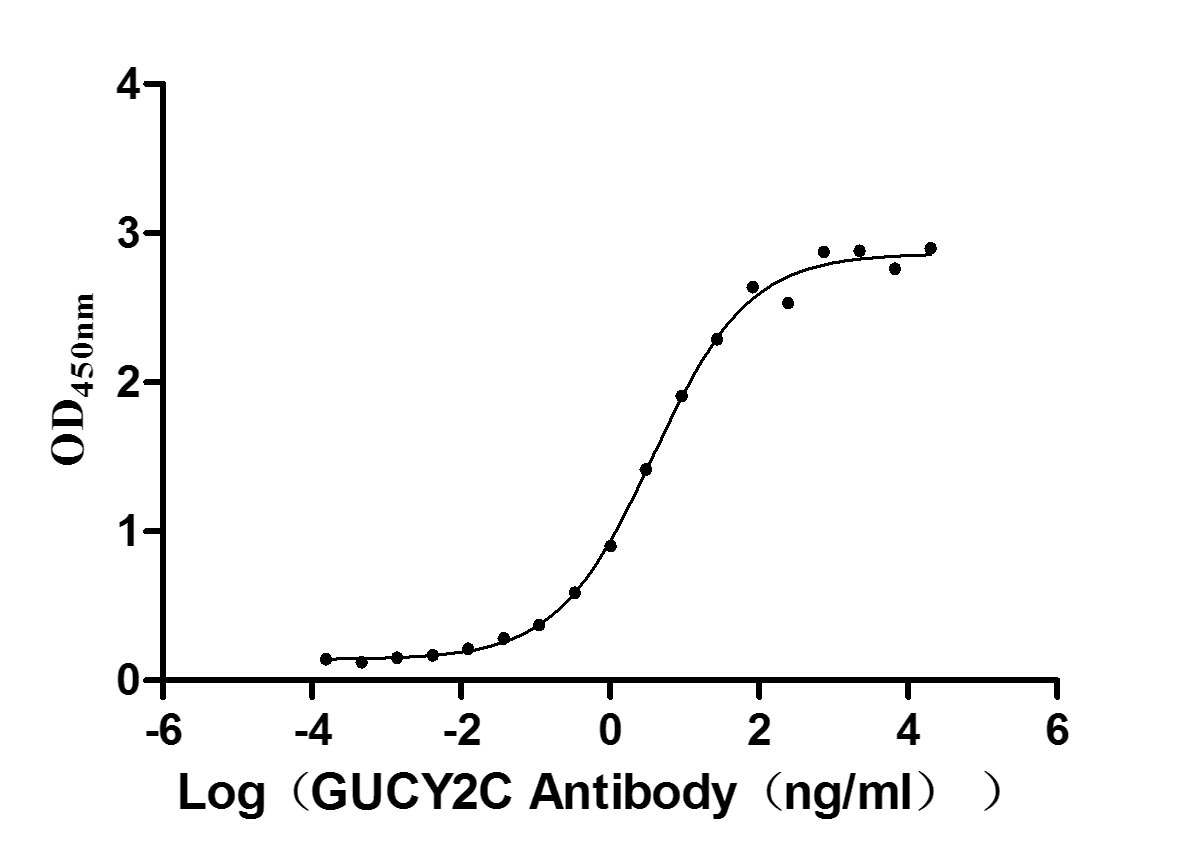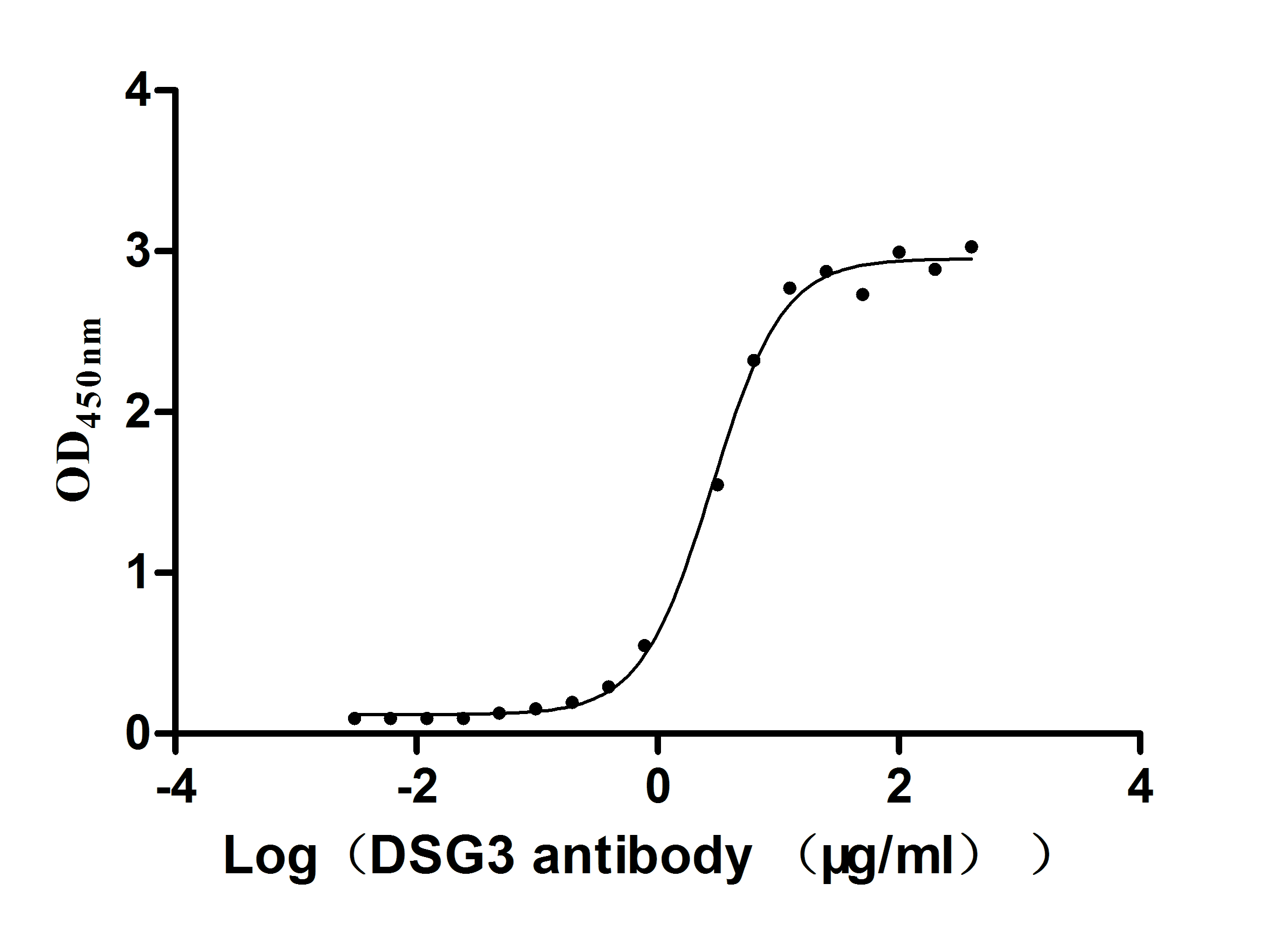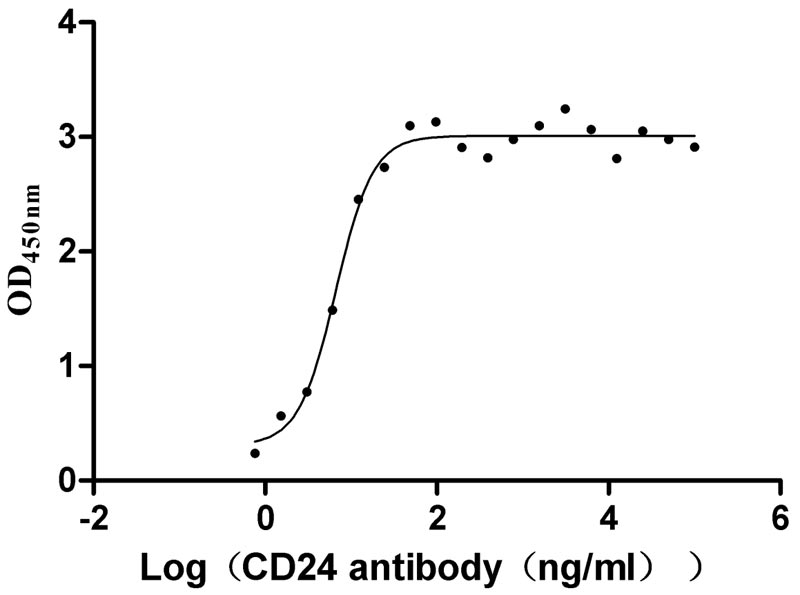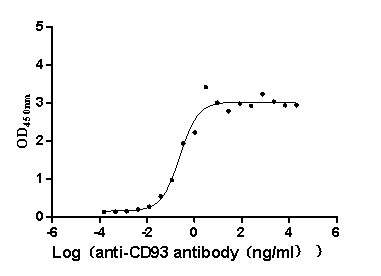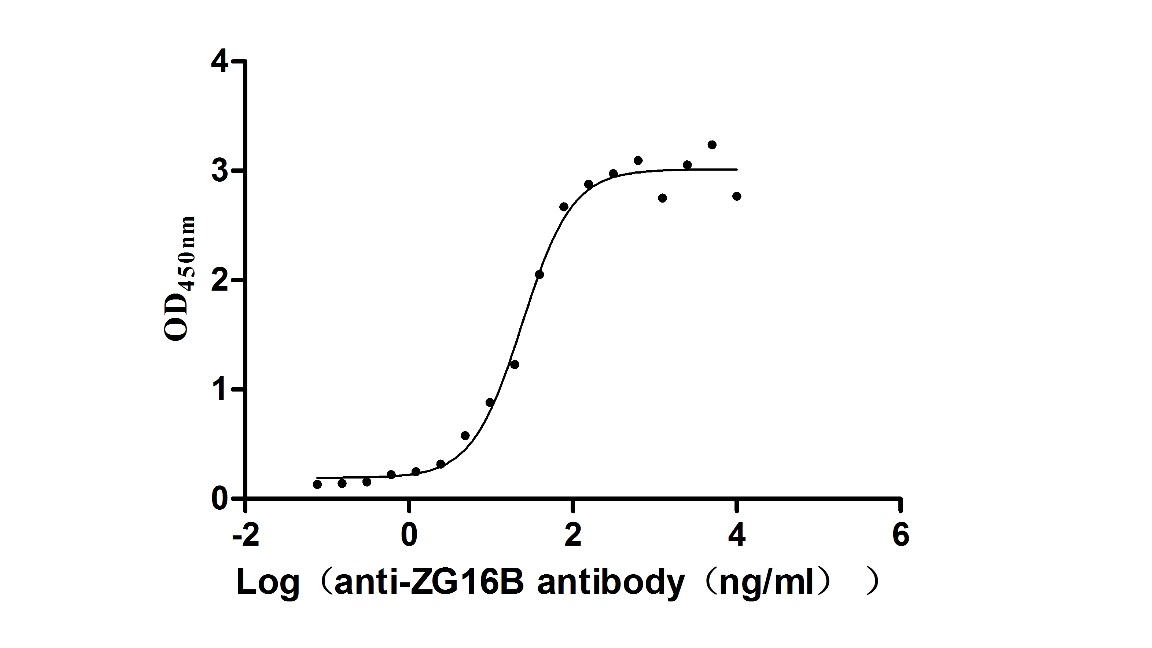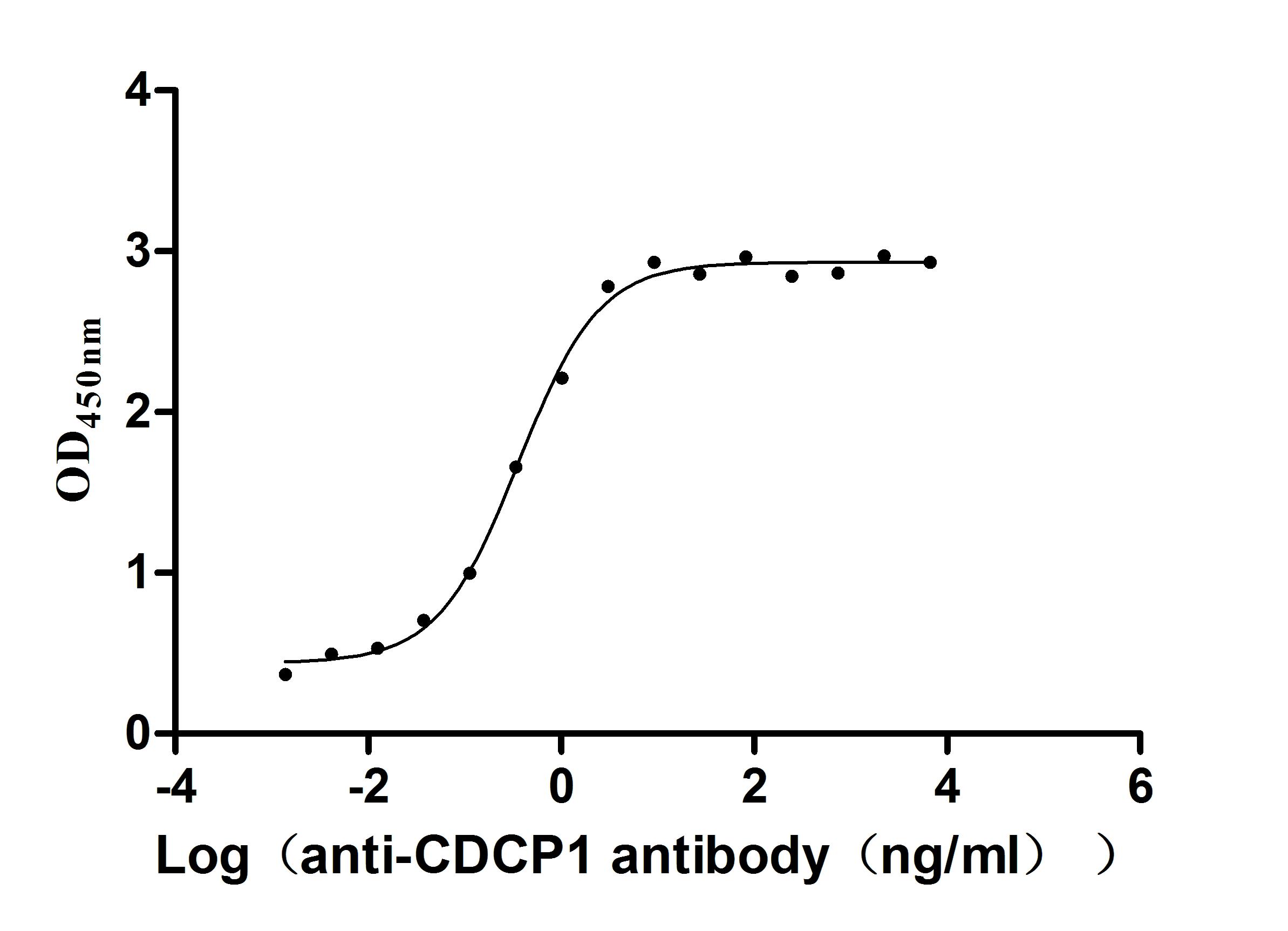Recombinant Human Homeodomain-interacting protein kinase 3 (HIPK3), partial
-
中文名称:人HIPK3重组蛋白
-
货号:CSB-YP872492HU
-
规格:
-
来源:Yeast
-
其他:
-
中文名称:人HIPK3重组蛋白
-
货号:CSB-EP872492HU
-
规格:
-
来源:E.coli
-
其他:
-
中文名称:人HIPK3重组蛋白
-
货号:CSB-EP872492HU-B
-
规格:
-
来源:E.coli
-
共轭:Avi-tag Biotinylated
E. coli biotin ligase (BirA) is highly specific in covalently attaching biotin to the 15 amino acid AviTag peptide. This recombinant protein was biotinylated in vivo by AviTag-BirA technology, which method is BriA catalyzes amide linkage between the biotin and the specific lysine of the AviTag.
-
其他:
-
中文名称:人HIPK3重组蛋白
-
货号:CSB-BP872492HU
-
规格:
-
来源:Baculovirus
-
其他:
-
中文名称:人HIPK3重组蛋白
-
货号:CSB-MP872492HU
-
规格:
-
来源:Mammalian cell
-
其他:
产品详情
-
纯度:>85% (SDS-PAGE)
-
基因名:
-
Uniprot No.:
-
别名:Androgen receptor interacting nuclear protein kinase; Androgen receptor-interacting nuclear protein kinase; ANPK; DYRK6; Fas interacting serine/threonine protein kinase; Fas-interacting serine/threonine-protein kinase; FIST; FIST3; Hipk3; HIPK3_HUMAN; homeodomain interacting protein kinase 3; Homeodomain-interacting protein kinase 3; Homolog of protein kinase YAK1; PKY; RP24 297H17.5; YAK1
-
种属:Homo sapiens (Human)
-
蛋白长度:Partial
-
蛋白标签:Tag type will be determined during the manufacturing process.
The tag type will be determined during production process. If you have specified tag type, please tell us and we will develop the specified tag preferentially. -
产品提供形式:Lyophilized powder
Note: We will preferentially ship the format that we have in stock, however, if you have any special requirement for the format, please remark your requirement when placing the order, we will prepare according to your demand. -
复溶:We recommend that this vial be briefly centrifuged prior to opening to bring the contents to the bottom. Please reconstitute protein in deionized sterile water to a concentration of 0.1-1.0 mg/mL.We recommend to add 5-50% of glycerol (final concentration) and aliquot for long-term storage at -20℃/-80℃. Our default final concentration of glycerol is 50%. Customers could use it as reference.
-
储存条件:Store at -20°C/-80°C upon receipt, aliquoting is necessary for mutiple use. Avoid repeated freeze-thaw cycles.
-
保质期:The shelf life is related to many factors, storage state, buffer ingredients, storage temperature and the stability of the protein itself.
Generally, the shelf life of liquid form is 6 months at -20°C/-80°C. The shelf life of lyophilized form is 12 months at -20°C/-80°C. -
货期:Delivery time may differ from different purchasing way or location, please kindly consult your local distributors for specific delivery time.Note: All of our proteins are default shipped with normal blue ice packs, if you request to ship with dry ice, please communicate with us in advance and extra fees will be charged.
-
注意事项:Repeated freezing and thawing is not recommended. Store working aliquots at 4°C for up to one week.
-
Datasheet :Please contact us to get it.
相关产品
靶点详情
-
功能:Serine/threonine-protein kinase involved in transcription regulation, apoptosis and steroidogenic gene expression. Phosphorylates JUN and RUNX2. Seems to negatively regulate apoptosis by promoting FADD phosphorylation. Enhances androgen receptor-mediated transcription. May act as a transcriptional corepressor for NK homeodomain transcription factors. The phosphorylation of NR5A1 activates SF1 leading to increased steroidogenic gene expression upon cAMP signaling pathway stimulation. In osteoblasts, supports transcription activation: phosphorylates RUNX2 that synergizes with SPEN/MINT to enhance FGFR2-mediated activation of the osteocalcin FGF-responsive element (OCFRE).
-
基因功能参考文献:
- HIPK1, HIPK2 and HIPK3 interact with the components of the carbon catabolite repressor 4 (CCR4)-negative on TATA (NOT) complex, an important regulator of all the major steps in the mRNA metabolism. it has emerged that HIPKs and their related miRNAs are involved in diabetic nephropathy, gastric cancer chemoresistance, cervical cancer progression, and recombinant protein expression in cultured cells. [Review] PMID: 29793420
- Overexpression of circHIPK3 promoted NCI-H1299 cell proliferation and knock-down of circHIPK3 inhibited cell proliferation. PMID: 28738961
- The two kinases HIPK3 and MAPK11 effect on Huntingtin (HTT)levels are mutant HTT protein (mHTT)-dependent, providing a feedback mechanism in which mHTT enhances its own level thus contributing to mHTT accumulation and disease progression. PMID: 29151587
- Over-expression of circHIPK3 effectively inhibits migration, invasion, and angiogenesis of bladder cancer cells in vitro and suppresses bladder cancer growth and metastasis in vivo Mechanistic studies reveal that circHIPK3 contains two critical binding sites for the microRNA miR-558 and can abundantly sponge miR-558 to suppress the expression of heparanase (HPSE). PMID: 28794202
- circHIPK3 directly binds to miR-124 and inhibits miR-124 activity and cell cycle progression. PMID: 27050392
- Analysis of these mutants revealed that HIPK1, HIPK2 and HIPK3 but not HIPK4 are capable of autophosphorylating on other tyrosines PMID: 25630557
- JNK regulates the expression of HIPK3 in prostate cancer cells, which leads to increased resistance to Fas receptor-mediated apoptosis by reducing the interaction between FADD and caspase-8 PMID: 14766760
- This finding has linked three common factors, HIPK3, JNK, and c-Jun, to the cAMP signaling pathway leading to increased steroidogenic gene expression PMID: 17210646
显示更多
收起更多
-
亚细胞定位:Cytoplasm. Nucleus.
-
蛋白家族:Protein kinase superfamily, CMGC Ser/Thr protein kinase family, HIPK subfamily
-
组织特异性:Overexpressed in multidrug resistant cells. Highly expressed in heart and skeletal muscle, and at lower levels in placenta, pancreas, brain, spleen, prostate, thymus, testis, small intestine, colon and leukocytes. Not found in liver and lung.
-
数据库链接:
Most popular with customers
-
Recombinant Human Heat-stable enterotoxin receptor (GUCY2C), partial (Active)
Express system: Mammalian cell
Species: Homo sapiens (Human)
-
Recombinant Mouse Desmoglein-3 (Dsg3), partial (Active)
Express system: Mammalian cell
Species: Mus musculus (Mouse)
-
Recombinant Human Signal transducer CD24 (CD24)-Nanoparticle (Active)
Express system: Mammalian cell
Species: Homo sapiens (Human)
-
Recombinant Human Intestinal-type alkaline phosphatase (ALPI) (Active)
Express system: Mammalian cell
Species: Homo sapiens (Human)
-
Recombinant Rat Intestinal-type alkaline phosphatase 1 (Alpi) (Active)
Express system: Mammalian cell
Species: Rattus norvegicus (Rat)
-
Recombinant Macaca fascicularis CD93 molecule (CD93), partial (Active)
Express system: Mammalian cell
Species: Macaca fascicularis (Crab-eating macaque) (Cynomolgus monkey)
-
Recombinant Macaca fascicularis zymogen granule protein 16 homolog B (ZG16B) (Active)
Express system: Mammalian cell
Species: Macaca fascicularis (Crab-eating macaque) (Cynomolgus monkey)
-
Recombinant Human CUB domain-containing protein 1 (CDCP1), partial (Active)
Express system: Mammalian cell
Species: Homo sapiens (Human)


